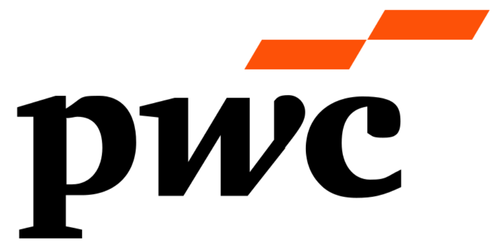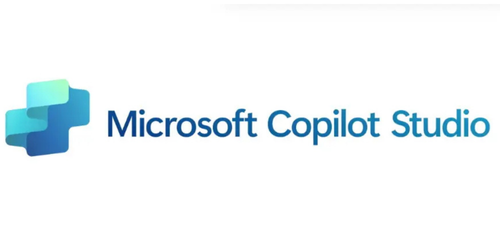Enterprise AI Governance: Trust, Compliance & Advantage
Enterprise AI agent orchestration platforms are rapidly reshaping the business landscape in 2025. With 25% of enterprises already deploying multi-agent systems and 80% planning expansion (Multimodal, Forbes, IBM), the shift from isolated AI pilots to orchestrated, production-scale agentic environments is both urgent and transformative. For mid- to senior-level business and technology leaders, this evolution presents not just opportunity, but a mandate: to secure, govern, and maximise the return on AI investments across every business unit.
This article synthesises the latest industry research and Gysho’s pragmatic methodology to provide actionable frameworks for secure, compliant, and outcome-driven AI agent orchestration. We benchmark leading platforms, highlight governance and security best practices, and offer practical guidance for measuring and optimising ROI. The goal: to empower decision-makers in complex, regulated enterprises to harness agentic AI’s full business value, responsibly and confidently.
01 | Market Overview: Why Orchestrated AI Agents Are the Enterprise Standard in 2025
THE RISE OF MULTI-AGENT SYSTEMS AND ORCHESTRATION PLATFORMS
KEY ADOPTION STATISTICS:
62%
Of organisations project agentic AI ROI to exceed 100%.
94%
See process orchestration as crucial for AI deployment.
43%
Allocate over half their AI budgets to agentic capabilities.
96%
Plan to expand agentic AI use in the next 12 months.
ENTERPRISE AI AGENTS: FROM HYPE TO SCALABLE VALUE
The enterprise AI landscape is accelerating, with major vendors like PwC (Agent OS), IBM (Watsonx Orchestrate), Microsoft (Copilot Studio), Salesforce (Agentforce), and ServiceNow (AI Agents) investing heavily in orchestration, governance, and integration for multi-agent environments. The conversation has shifted from hype to measurable business impact, as 71% of enterprises now deploy AI agents for process automation and 65% move from experimentation to pilot programmes.
The appeal is clear: efficiency, cost savings, risk mitigation, and strategic agility. Yet, as IBM experts emphasise, success requires more than powerful models. True value comes from orchestrating agents at scale with mature governance, robust security, and close alignment to business objectives.
02 | Core Pillars of Modern AI Governance
CHOOSING THE RIGHT ENTERPRISE AI ORCHESTRATION PLATFORM: SECURITY, GOVERNANCE, AND SCALE
PwC, IBM, Microsoft, Salesforce, and ServiceNow are redefining enterprise AI orchestration, uniting multi-agent workflows, embedding governance, and securing every layer. The right platform choice is now a strategic imperative, enabling organisations to deploy and scale agentic workflows quickly, safely, and with measurable impact.

PwC agent OS
PwC’s Agent OS exemplifies the new standard for enterprise AI orchestration. It enables organisations to:
- Orchestrate agents from multiple vendors into unified workflows.
- Apply role-based access control (RBAC) and Microsoft Graph integration for permissions management.
- Leverage a recursive, graph-based approach to workflow design and reusability.
- Embed security at every layer: encrypted credential vaults, schema validation, session tracking, and human-in-the-loop feedback.
- Integrate with PwC’s Responsible AI framework for oversight and accountability.

IBM Watsonx Orchestrate
IBM’s Watsonx Orchestrate focuses on responsible AI adoption, integrating agents with enterprise workflows while maintaining transparency and auditability. Key differentiators:
- Support for complex, multi-agent collaboration and meta-orchestration.
- Built-in rollback mechanisms, sandboxed environments, and audit logs.
- Alignment with IBM’s Responsible AI principles: fairness, transparency, and accountability.
- Flexible integration with proprietary enterprise data, enabling differentiated, scalable agentic solutions.

Microsoft Copilot Studio
Microsoft’s Copilot Studio advances agent security and governance through:
- Model Context Protocol (MCP) for secure, policy-aligned access to tools and data.
- Entra Agent ID: unique, traceable identities for agents, managed throughout their lifecycle.
- Layered security: data loss prevention, adaptive policies, extended detection and response (XDR), and compliance auditing.
- Agent registry: authoritative store for agent metadata, relationships, and operational context.

Salesforce Agentforce
While detailed technical features vary, both platforms prioritise:
- Seamless integration with enterprise systems (CRM, ERP, ticketing, etc.).
- Native support for multi-agent workflows and interoperability.
- Embedded governance, auditability, and compliance controls.
- Role-based access and permission management for secure agent operation.
PLATFORM SELECTION CHECK-LIST
When evaluating orchestration platforms, enterprise leaders should prioritise:
- Interoperability: Native integrations, open APIs, cross-platform orchestration.
- Governance: Role-based access, audit trails, compliance frameworks.
- Security: Encrypted credentials, session tracking, sandboxing, threat detection.
- Scalability: Support for rapid deployment, workflow reusability, and expansion.
- Business Alignment: Ability to map agentic workflows to measurable business outcomes.
03 | Governance Frameworks: Identity, Access, Audit, and Compliance for Agentic AI
THE IMPERATIVE FOR ROBUST AI GOVERNANCE
As agentic AI systems proliferate, governance is a top priority for 75% of technology leaders. Without oversight, risks escalate: data leakage, unauthorised actions, compliance violations, and operational failures. The governance challenge is unique: agents operate autonomously, often outnumbering human users, and can impact sensitive business processes at scale.
CORE GOVERNANCE CAPABILITIES
AGENT IDENTITY MANAGEMENT
- Unique, traceable identities for agents, governed throughout their lifecycle.
- Sponsorship and accountability for agent actions and access.
ACCESS
CONTROL
- Role-based, context-aware permissions that are scoped, time-bound, and revocable in real time.
- Minimum necessary access for each agent, with dynamic adjustment as workflows evolve.
AUDITABILITY AND COMPLIANCE
- Comprehensive logging of agent activities, decisions, and data access.
- Enforcement of retention policies, internal controls, and regulatory requirements (GDPR, SOC2, etc.).
- Human-in-the-loop oversight for critical decisions and rollback mechanisms.
VISIBILITY AND OBSERVABILITY
- Unified inventory of all agents across SaaS, PaaS, IaaS, and local environments.
- Real-time monitoring of agent behaviour, ownership, and access patterns.
GOVERNANCE-READY PLATFORM FEATURES
LEADING PLATFORMS NOW OFFER:
- Centralised governance dashboards for oversight and risk management.
- Agent registries for metadata, relationships, and operational context.
- Integration with enterprise identity providers and compliance tools.
- Policy-driven controls for agent deployment, operation, and deactivation.
ACTIONABLE GOVERNANCE FRAMEWORK - ENTERPRISE LEADERS SHOULD IMPLEMENT:
04 | Embedding Enterprise-Grade Security into Agentic AI Systems
THE NEW SECURITY RISK LANDSCAPE
Autonomous agents introduce a fundamentally different risk profile. As Microsoft’s CISO notes, agents “don’t sleep, don’t forget, and don’t always follow the rules.” The attack surface expands: prompt injection, data exfiltration, over-permissioning, and anomalous behaviour are real threats. Security must be layered, proactive, and integrated into every phase of agent lifecycle management.
SECURITY BEST PRACTICES FOR AI ORCHESTRATION PLATFORMS
IDENTITY AND ACCESS MANAGEMENT
Unique agent identities, zero-default permissions, just-in-time access.
DATA
SECURITY
Inline data loss prevention (DLP), sensitivity-aware controls, encrypted credential vaults.
THREAT DETECTION AND RESPONSE
Extended detection and response (XDR) integration, prompt shields, anomaly monitoring.
NETWORK
SECURITY
Segmented, policy-driven network access for agents; traffic inspection and malicious destination blocking.
POSTURE
MANAGEMENT
Continuous assessment of misconfigurations, excessive permissions, and vulnerabilities.
SECURE DEPLOYMENT CHECKLIST
- Inventory all agents and their permissions.
- Implement RBAC and dynamic, context-aware access controls.
- Encrypt credentials and sensitive data at rest and in transit.
- Continuously monitor agent activities for anomalous behaviour.
- Integrate agent security signals with enterprise XDR platforms.
- Regularly audit and update security policies as agentic environments evolve.
COMPLIANCE AND TRUST:
05 | Measuring and Maximising ROI: From Pilots to Enterprise-Scale Value
THE ROI IMPERATIVE FOR AGENTIC AI
Agentic AI is not just about automation, it’s about measurable business impact. 62% of organisations expect more than 100% ROI, with average projections at 171% (Multimodal). Yet, 69% of AI projects fail to reach operational deployment, often due to governance and integration challenges.
KEY ROI DRIVERS AND METRICS
PROCESS
AUTOMATION
71% of deployed agents focus on automating high-volume, repetitive tasks, delivering cost savings and productivity gains.
BUSINESS DECISION SUPPORT
Agents increasingly drive insights, risk analysis, and operational optimisation.
SCALABILITY AND
SPEED
Platforms like PwC Agent OS and IBM Watsonx Orchestrate enable rapid deployment (as little as 30 days), accelerating time-to-value.
INTEGRATION AND
INTEROPERABILITY
87% of IT leaders rate integration as critical; platforms must connect seamlessly with CRMs, ERPs, and proprietary systems.
ROI MEASUREMENT FRAMEWORK
ENTERPRISES SHOULD:
- Define clear business outcomes for each agentic workflow (e.g., cost reduction, process acceleration, compliance improvement).
- Track key performance indicators (KPIs): turnaround time, error rates, user adoption, and financial impact.
- Benchmark ROI across business units and use cases; identify high-value workflows for scale.
- Continuously refine agentic solutions through quarterly innovation cycles and feedback loops.
OVERCOMING COMMON ROI BARRIERS
- Invest in governance-ready platforms to avoid pilot failure and operational risk.
- Prioritise interoperability and integration to maximise agentic impact.
- Align agentic AI initiatives with business strategy and measurable outcomes from the outset.
06 | Gysho’s Distinct Approach: Bespoke, Secure, and Outcome-Focused Enablement
GYSHO DELIVERS:
Gysho’s methodology is uniquely suited to the challenges and opportunities of enterprise AI agent orchestration. Unlike advisory-centric or template-driven consultancies, Gysho delivers:
STRATEGIC WORKSHOPS AND ADVISORY
Building capability and identifying high-impact agentic use cases.
USE-CASE-BASED ROADMAPS
Aligning orchestration initiatives to measurable business value.
RAPID PROTOTYPING AND EXPERIMENTATION
Risk-managed pilots with embedded governance and security.
CONTINUOUS
DELIVERY
Quarterly releases of bespoke, enterprise-grade agentic solutions.
EMBEDDED
PARTNERSHIP
Ongoing support, measurement, and refinement while clients retain full IP, with all work performed in-house by Gysho.
ENTERPRISE-GRADE SECURITY AND COMPLIANCE
Security, governance, and compliance are built in from day one, not as afterthoughts.
GYSHO'S APPROACH:
For regulated, complex, or high-value environments, Gysho’s fully managed AI-as-a-Service enables organisations to confidently adopt, operate, and evolve agentic AI platforms without the operational burden or compliance risk of traditional custom projects. The approach is outcome-driven, practical, and always aligned to live business challenges.
The Path Forward | Secure, Govern, and Maximise ROI with Enterprise AI Orchestration
NEXT STEPS:
1. Platform Selection – Choose solutions that prioritise interoperability, governance, security, scalability, and business alignment.
2. Governance Implementation – Establish agent registries, RBAC, audit trails, and compliance frameworks to ensure accountability.
3. Security Integration – Embed identity, access, data, network, and threat protection into every agent workflow.
4. ROI Measurement – Define clear KPIs, monitor business outcomes, and benchmark performance across units.
5. Continuous Innovation – Implement quarterly cycles for delivery, feedback, and optimisation of agentic solutions.
6. Human-in-the-Loop Oversight – Maintain checkpoints for critical decisions, rollback capabilities, and exception handling.
OPEN STRATEGIC QUESTIONS:
What governance and security frameworks are needed to scale confidently?
Which business units are best positioned for early agentic ROI?
How will you measure and refine agentic AI impact over time?
WHY PARTNER WITH GYSHO
The agentic era is here, and the enterprises that will thrive are those that combine secure, governed, and outcome-driven orchestration with strategic foresight. Gysho’s methodology, rooted in industry best practices, provides a clear, actionable roadmap for moving from experimentation to production-scale value.
Our bespoke, secure, and outcome-focused approach empowers organisations to benchmark leading platforms effectively, apply proven frameworks for governance and security, and align AI initiatives directly with measurable business outcomes.
With Gysho, you move beyond technical implementation to strategic transformation; building trust, agility, and measurable value in the agentic AI era.


